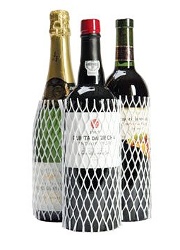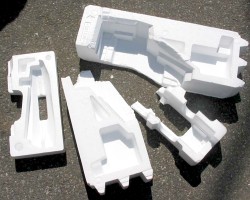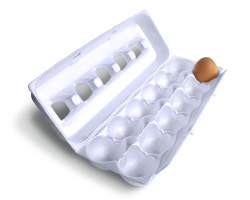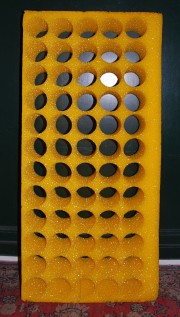How can I reuse or recycle the nets you get around wine bottles?
 Long time Recycle This friend (and very frequent commenter!) Anna has a question about the protective sleeves slipped around wine bottles:
Long time Recycle This friend (and very frequent commenter!) Anna has a question about the protective sleeves slipped around wine bottles:
Any ideas what to do with the plastic nets they put for wine bottles for protecting them when you buy one?
I don’t drink wine so I had to turn to my friend Google to see what those nets are like – some have big holes and look foamy, whereas others have smaller holes and look more like the thin plastic netting you get garlic bulbs in (a smaller version of orange/onion nets). I think the former are to provide some “bounce” protection while the latter just keep all the big bits of glass together in the event of a breakage. (Please correct me if I’m wrong about those assumptions.)
Either way, the first suggestion has to be reduce if you can: if they only add the netting at the shop after you’ve bought the wine, don’t let them: either take an old net to reuse or throw caution to the wind and just go nude ;)
As for reusing them for other things, the thinner/smaller holed nets can be filled with bird seed to make your own bird feeders, filled with the ends of old soap bars and hung on an outside tap for garden clean-up, or bunched up to make washing scrubbies.
I’d be tempted to throw a few of the foam type ones in with our reusable shopping bag stash for when we go to the supermarket for a big shop – they could cushion glass jars and other glass bottles to save them clinking together all the way home. Opened out flat, the foam ones would also be useful as cushioning under heavy plant pots (so they’re less likely to damage/dint the surface they’re stood on) or between occasionally use crockery to save that knocking together too.
How do you reuse or recycle those nets?



 Expanded polystyrene, the moulded white shapes you get as protective packaging when you buy electronics or large toys etc, is a pain to recycle – it can be recycled now but not many places collect it.
Expanded polystyrene, the moulded white shapes you get as protective packaging when you buy electronics or large toys etc, is a pain to recycle – it can be recycled now but not many places collect it. This is usually the other way around – we usually suggest things that can be used to insulate water pipes – but I saw some foam water pipe lagging on the road today while walking the dog. I imagine it had blown off a nearby skip or been taken off by kids (because reuse #1: they’re great for sword fights) but either way: yoink!
This is usually the other way around – we usually suggest things that can be used to insulate water pipes – but I saw some foam water pipe lagging on the road today while walking the dog. I imagine it had blown off a nearby skip or been taken off by kids (because reuse #1: they’re great for sword fights) but either way: yoink! We’ve had an email from Rowena asking about reuses for foam egg boxes:
We’ve had an email from Rowena asking about reuses for foam egg boxes: We’ve had an email from Petra:
We’ve had an email from Petra:














